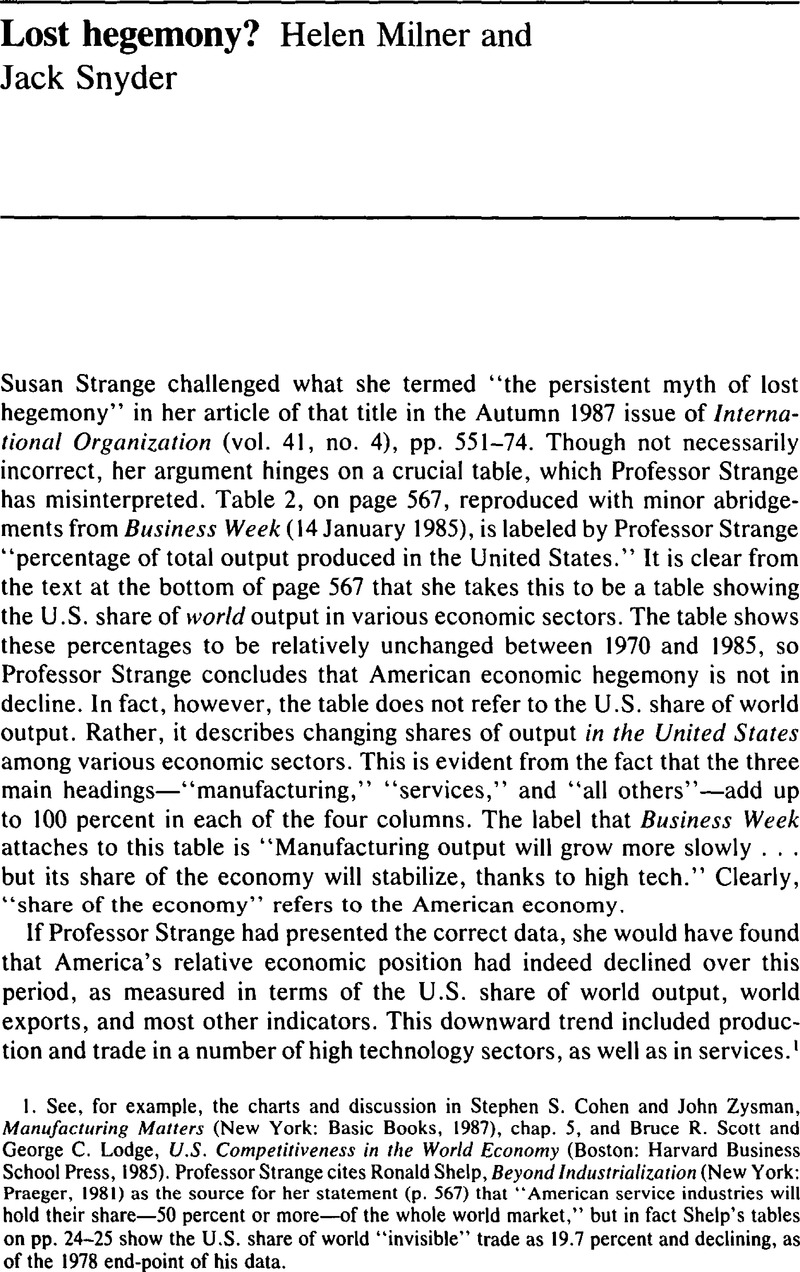Article contents
Lost hegemony?
Published online by Cambridge University Press: 22 May 2009
Abstract

Information
- Type
- Comment
- Information
- Copyright
- Copyright © The IO Foundation 1988
References
1. See, for example, the charts and discussion in Cohen, Stephen S. and Zysman, John, Manufacturing Matters (New York: Basic Books, 1987), chap. 5Google Scholar, and Scott, Bruce R. and Lodge, George C., U. S. Competitiveness in the World Economy (Boston: Harvard Business School Press, 1985)Google Scholar. Professor Strange cites Shelp, Ronald, Beyond Industrialization (New York: Praeger, 1981) as the source for her statement (p. 567)Google Scholar that “American service industries will hold their share—50 percent or more—of the whole world market,” but in fact Shelp's tables on pp. 24–25 show the U. S. share of world “invisible” trade as 19. 7 percent and declining, as of the 1978 end-point of his data.
2. Kennedy, Paul, The Rise and Fall of the Great Powers (New York: Random, 1987), p. 525Google Scholar.
3. Russett, Bruce, “The Mysterious Case of Vanishing Hegemony; or, Is Mark Twain Really Dead?” International Organization 39 (Spring 1985), pp. 207–32CrossRefGoogle Scholar.
4. We have not been able to verify Reich's figure, however, since his source could not be located with the information in his footnote.
- 5
- Cited by

